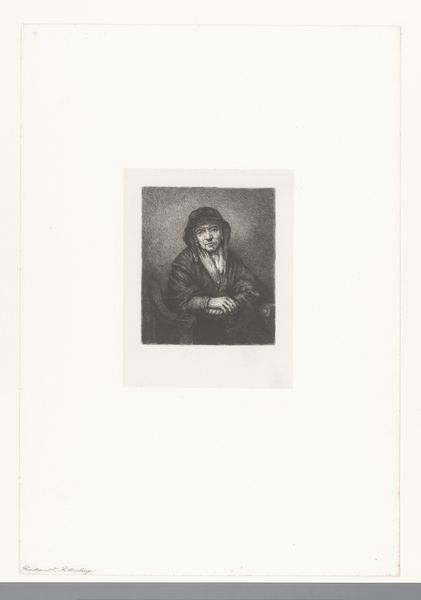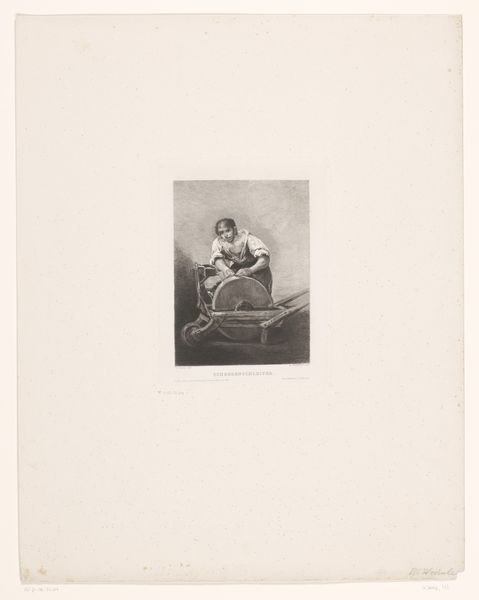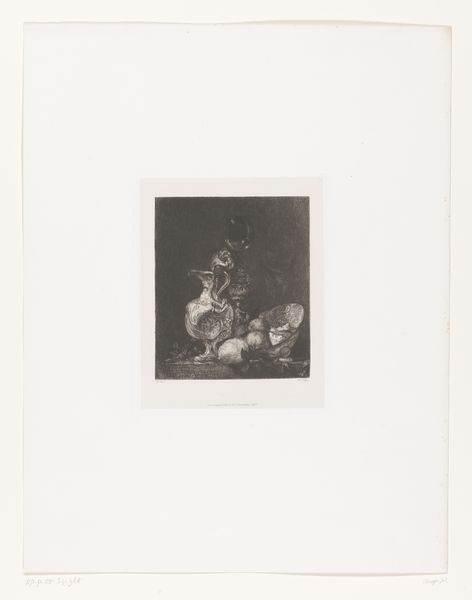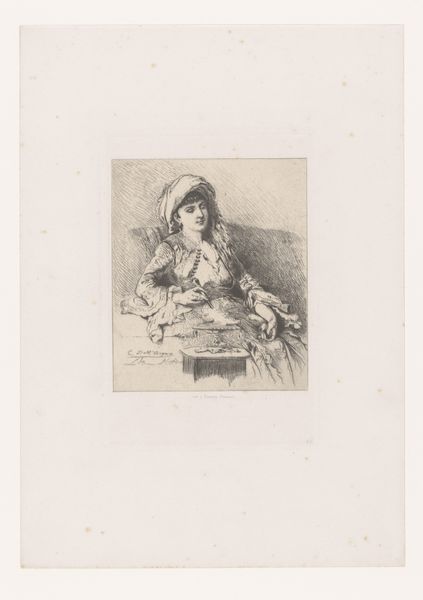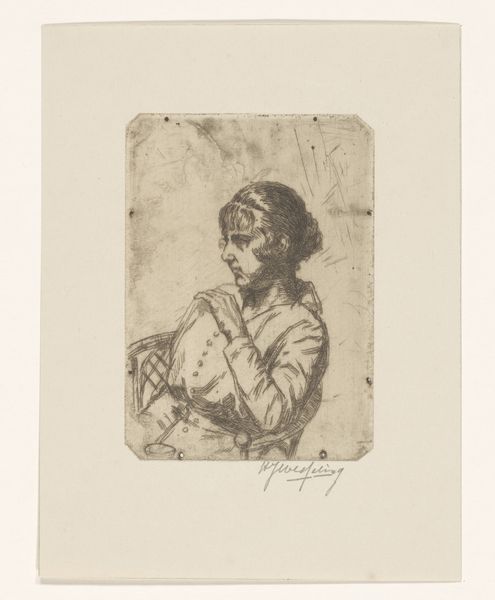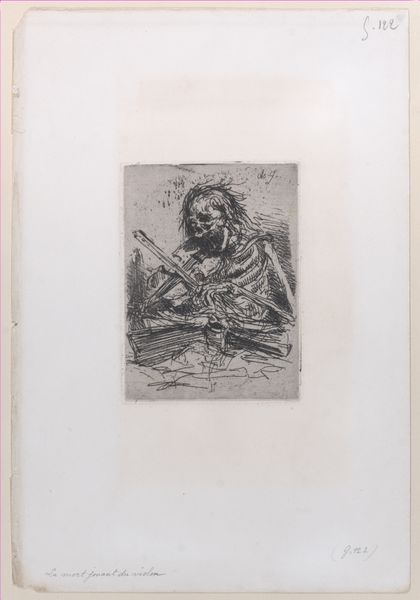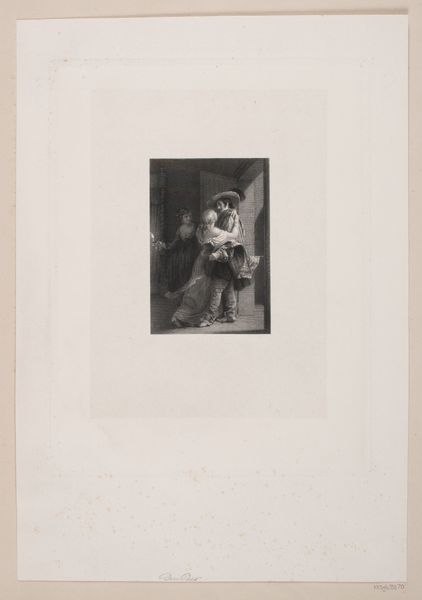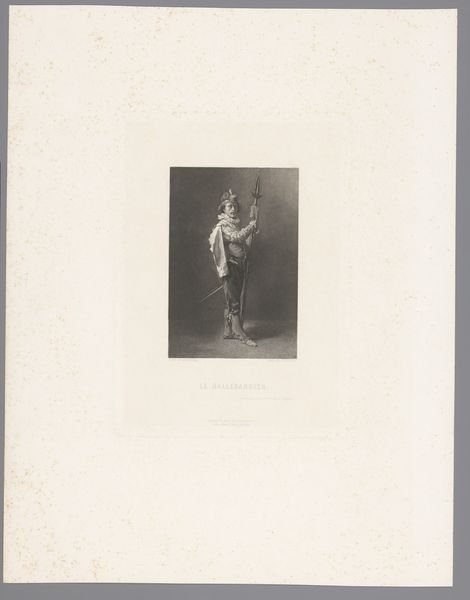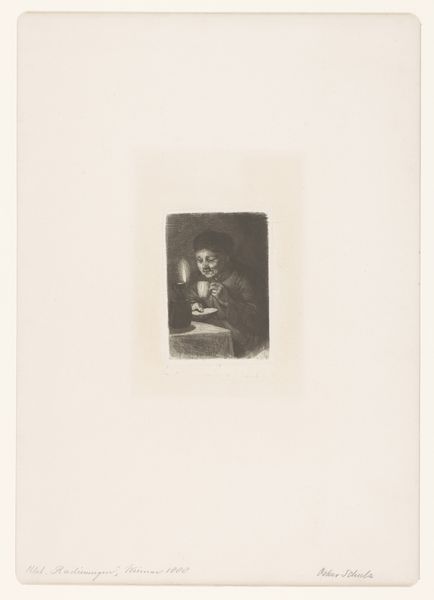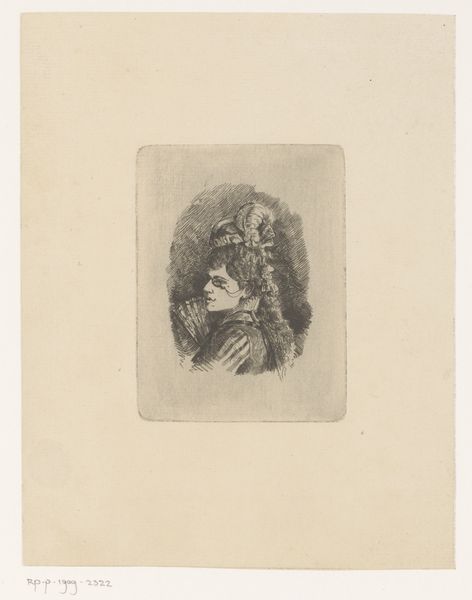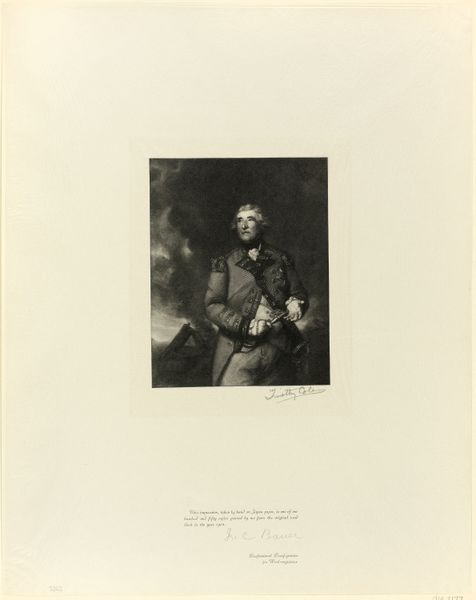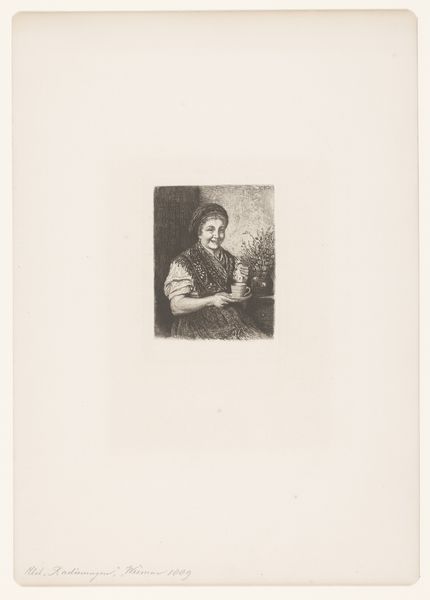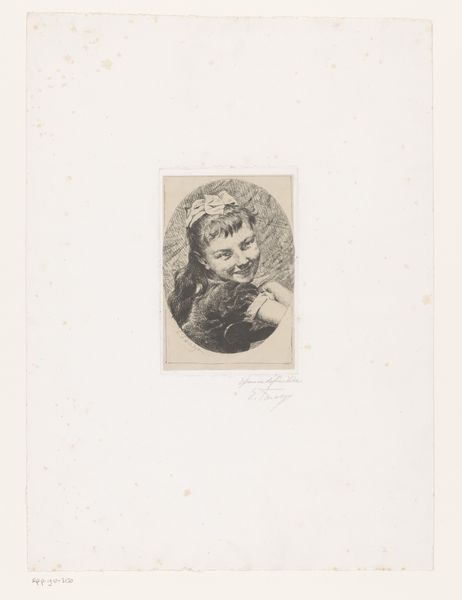
print, woodblock-print, woodcut, wood-engraving
#
portrait
# print
#
woodblock-print
#
woodcut
#
wood-engraving
Dimensions: 5 1/2 x 4 in. (13.97 x 10.16 cm) (image)12 x 9 1/2 in. (30.48 x 24.13 cm) (sheet)
Copyright: Public Domain
Curator: This is "Portrait of Ellen Terry", a wood engraving from the 19th century by William B. Closson. It’s part of the collection at the Minneapolis Institute of Art. Editor: It’s… misty. And she looks lost in thought, almost as if she's not posing but has simply been caught unawares by the artist, lost in reverie while holding a sprig of something. The greyscale palette amplifies the dreamy quality. Curator: Ellen Terry was, in her time, the leading Shakespearean actress in Britain, part of the bohemian artistic circles of the day, and later an early advocate for women's suffrage. Closson’s choice of wood engraving is interesting. The medium allows for incredible detail, capturing the soft textures of her dress and hair. Wood engraving was used for commercial printing so the fine art printing aspect really says something here. Editor: Absolutely! Her fame made her an image worth reproducing. It feels a bit romantic, even nostalgic, and considering the Victorian era’s obsession with mourning and memory, I wonder if this portrait touches upon those themes, reflecting the transient nature of performance and the desire to preserve beauty. This piece has a real sense of the gaze. What did it mean to be perceived this way by the artist and the public at that time? Curator: That's such a good point about the act of observation and celebrity. Closson positions Ellen as both subject and symbol. You notice how the light seems to emanate from her face, highlighting her as a figure of radiance, perhaps an idolized representation of womanhood. In its day it made Terry, the great stage actress, even more famous and available to public view, which is exactly what the artist set out to do. Editor: This begs the question of who dictates how we view beauty, and whose stories get told? Does Closson reinforce stereotypes, or subvert them through Terry's independent spirit, given that she became a very successful and politically engaged celebrity? Curator: Well, maybe he's not necessarily trying to reinforce stereotypes but trying to capitalize on Terry's then liberated attitude to womanhood! I find it quite forward for its time. It still gives me pause for thought! Editor: Me too, it speaks volumes about visibility, labor, and selfhood. It's amazing.
Comments
No comments
Be the first to comment and join the conversation on the ultimate creative platform.
